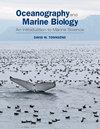珍贵珊瑚的开发及保育
1区 生物学
Q1 Agricultural and Biological Sciences
引用次数: 147
摘要
世界各地珍贵的珊瑚已经被商业开发了许多世纪。自古以来,它们的骨骼就被用作护身符或珠宝,是最有价值的海洋生物资源之一。珍贵的珊瑚渔业通常以“繁荣与萧条”原则为特征,迅速耗尽发现的种群,然后转移到下一个种群。如今,大多数已知的种群都被过度开发,种群数量也在下降。对所有现有数据的分析清楚地揭示了大多数渔业的不可持续性质。珍贵珊瑚属于深海珊瑚的功能群,是重要的结构形成生物,被称为生态系统工程师,为其他生物提供庇护,增加生物多样性。然而,它们的管理通常侧重于单一物种,而不是整体的栖息地管理方法。本文对珍贵珊瑚的生物学特性、渔业的历史生态学和社会经济进行了比较,以期改善珍贵珊瑚的管理和保护。分析表明,在珍贵珊瑚的开发中,必须转变模式,这不仅是为了保护生物多样性高的栖息地,也是为了实现可持续渔业和稳定专门的珠宝业。本文章由计算机程序翻译,如有差异,请以英文原文为准。
The Exploitation and Conservation of Precious Corals
Precious corals have been commercially exploited for many centuries all over the world. Their skeletons have been used as amulets or jewellery since antiquity and are one of the most valuable living marine resources. Precious coral fisheries are generally characterized by the 'boom-and-bust' principle, quickly depleting a discovered stock and then moving on to the next one. Most known stocks are overexploited today, and populations are in decline. The unsustainable nature of most fisheries is clearly revealed by analyzing all available data. Precious corals belong to the functional group of deep corals and are important structure-forming organisms, so called ecosystem engineers, that provide shelter for other organisms, increasing biodiversity. Yet, their management is usually focused on single species rather than a holistic habitat management approach. This review compares the biology of precious corals as well as the historical ecology and the socioeconomy of their fisheries to improve precious coral management and conservation. The analysis demonstrates that a paradigm shift is necessary in precious coral exploitation, not only to conserve habitats of high biodiversity but also to achieve sustainable fisheries and stabilize a specialized jewellery industry.
求助全文
通过发布文献求助,成功后即可免费获取论文全文。
去求助
来源期刊
自引率
0.00%
发文量
0
期刊介绍:
With increasing interest in the field and its relevance in global environmental issues, Oceanography and Marine Biology: An Annual Review provides authoritative reviews that summarize results of recent research in basic areas of marine research, exploring topics of special and topical importance while adding to new areas as they arise

 求助内容:
求助内容: 应助结果提醒方式:
应助结果提醒方式:


